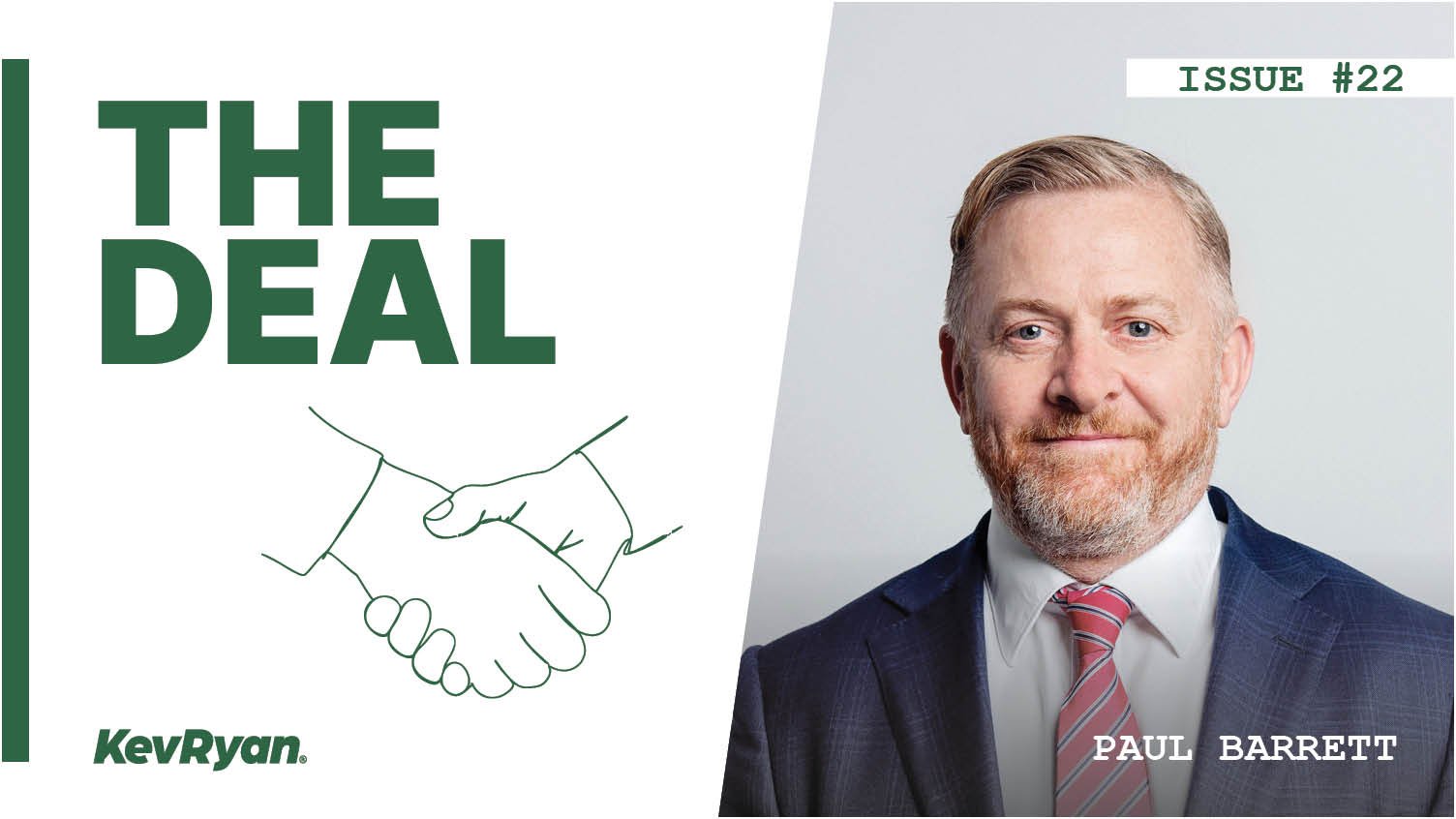Internal succession needs a plan … now!
WRITTEN BY: KEV RYAN
When the time comes to release ownership in a business you have built, internal succession is a very satisfying pathway. But success only comes from planning well in advance. Here’s how.
Handing over to someone you’ve worked with – someone you trust with the business you have built, who is known and liked by clients and who is deeply familiar with your culture, team members and systems – is an excellent outcome when the time comes for you to ease out the door. It’s clean, personal, and less disruptive than selling to an external party … if it’s done right and prepared well in advance.
And there’s the catch, it only works if you plan early.
I’ve seen a lot of business owners trying to create a succession plan at the last minute, when they’ve already decided it’s time to get out. They tend to discover that it’s a lot messier and more difficult than they imagined, at least without the help of an expert.
Planning involves plenty more than simply identifying the right person to take over the business. It requires the right structure and agreements, alignment around how the business is valued, and lots of honest conversations well before the handover occurs.
Why internal succession is attractive
There are plenty of reasons I’ve seen to go for an internal succession process. They include:
No need to introduce someone foreign to the client base, therefore it’s less disruptive for clients.
Helps maintain team culture, including all-important relationships and routines.
It satisfies your ‘why’, meaning it offers satisfaction around employing and mentoring the person who eventually takes over.
It’s a strong vote of confidence in the business you built if someone knows the business intimately and wants to make it their own.
But there’s also plenty that I’ve seen go wrong, without the right level of preparation. The negative outcomes can include:
Major disagreements over valuation method.
Deal stalling when parties refuse to see eye-to-eye in the heat of the moment, for one reason or another.
Disagreements over funding method – I don’t believe in the buy-in being funded out of profits and I strongly disagree with gifting equity. Without a cash buy-in, it’s too easy for the new partner to walk out the door.
Without restraints or restrictive covenants, an existing partner can leave and take clients with them.
Narin Xavier de Saini from Ascenta Corporate & Commercial Law, who like me has seen more than his fair share of succession efforts – some excellent and some not so much – reckons a succession plan should be put in place at a time when the focus is not on succession.
“You could have in place a shareholders’ agreement, or buy/sell agreements when you first form the partnership, so you deal with these issues early on when everyone’s happy, when everyone is excited and motivated for the firm,” he says.
“This means the questions that pop up for succession – about valuation and funding, etc. – are dealt with beforehand. APES 325 also requires practices to document and maintain a succession plan, but I’m not sure how many actually do it.”
What’s involved in a succession agreement?
Here are the factors that I believe make up an excellent succession agreement:
Valuation methodology. Will the firm be valued on a multiple of fees, or on earnings before interest and taxes, or on a third-party valuation? This mustn’t be left open to interpretation.
Funding mechanisms. Will the incoming Partner pay up front or secure third-party finance? Can they use dividends to fund their buy-in?
Pre-emptive rights and equity allocation. Who gets first dibs if someone wants to sell their shares? Are equity interests being gifted (I advise against it)? Are new Partners being brought in as salaried first, or equity straight away?
Restraints and protections. If the outgoing Partner leaves, are there restraints in place to stop them walking away with clients? Narin says that the number of smaller firms that don’t have proper restraints or client protection mechanisms in place is surprising. That’s a risk you don’t want to take.
Trigger events. Succession isn’t always voluntary. A Partner might get sick, die unexpectedly, or go through a divorce. Your agreement should spell out what happens if someone exits under less-than-ideal circumstances.
A real benefit of a well-shaped agreement that is put in place well in advance is that it manages expectations, ensuring the owner does not dangle the partnership or equity as a carrot.
If you have a rising star and your intention is to select internal succession as your exit plan, you’ve got to commit. I’m still surprised by the number of calls I field from talented accountants looking to buy somewhere else because their old boss, inevitably a mentor who’s become a friend, has reneged on the promise of partnership or business ownership.
An agreement brings commitment from all stakeholders, and it de-risks the deal after completion, too.
Post-completion: Striking the right balance
Do you stay on after handing over ownership, to perhaps continue servicing a few legacy clients? Do you still draw an income? Do you sign a restraint? Do you have a clean break, getting out of the business for good? Will there be deferred compensation plans where the outgoing partner receives payments, post-retirement. Are these payments tied to performance or client retention?
Whatever the post-completion agreement, it must be agreed in advance and in writing, just like the pre-completion details. When it is, that’s when I see real success around succession.
If internal succession is a potential future option, the best time to get prepared is right now. It’s an excellent investment in the future.
Whatever the shape of your business, to kick off your succession / exit planning, feel free to contact my office and schedule an initial chat.
MORE ISSUES






























